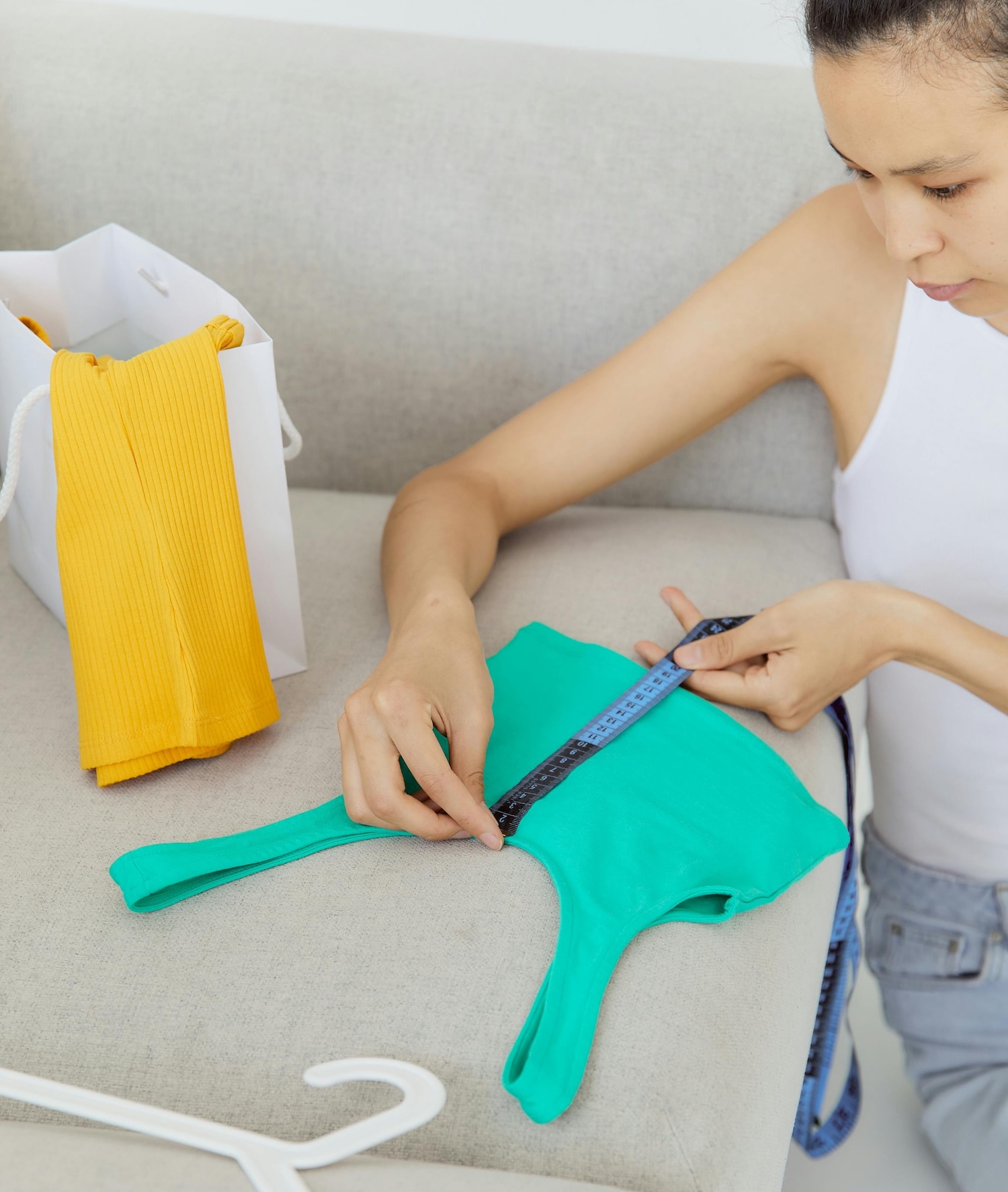
Editorial: What the “SHT” is secondhand tax, anyway?
The “double tax” on secondhand items has long been an annoyance for buyers and sellers. Here’s why IKEA Canada's recent call for the end of it is still unlikely, and what we can do instead
Have you considered that you’re paying “double” tax when you purchase secondhand goods?
If you haven’t heard yet, IKEA Canada has caused a bit of a stir on social media over the past few weeks with its “End the Double Tax on Secondhand Items” campaign.
Here’s the lowdown: From Apr. 2 through Apr. 11, shoppers in the family membership at IKEA Canada’s Ontario locations could visit the “as is” marketplace of the store — the company’s section for gently used, pre-loved furniture obtained through its sell-back program — and save 13 per cent on items, which is equivalent to the total amount of tax levied on used goods in the province.
IKEA says because tax was already applied at the point of sale when the items were sold the first time, used goods technically are being taxed twice.
If you’re not familiar with Ontario’s tax structure, a Harmonized Sales Tax (HST) of 13 per cent is applied to every good — brand-new or used — sold in the province by companies earning over $30,000 a year in revenue. Taxes vary between five and almost 15 per cent across Canada’s provinces and territories.
Non-commercial, person-to-person sale of goods is exempt from these taxes, but otherwise, no matter where you are in the country, every time you buy a secondhand item from an established for-profit business, you are being taxed.
And if you live outside Canada in a state that charges tax on the sale of used goods, you are also being taxed twice.
For the purposes of the campaign, IKEA called its tax relief “secondhand tax” or SHT (pun definitely intended), and says it’s unfair to consumers that the government collects tax again when an item is resold.
While IKEA Canada’s limited-time SHT promotion has come and gone, the legacy piece of the campaign is a Change.org petition that at the time of this writing has just over 31,000 signatures.
“Second-hand items may lose their original look, packaging, price, and value. But there’s one thing they never lose: the tax,” the company writes in the petition.
“With inflation and rising costs of living, this undue double tax needs to end. Especially at a time when Canadians simply can’t afford it, and when shopping circular is more important than ever.
“That’s why we want our federal and provincial governments to consider eliminating the tax from secondhand items, Canada-wide. And if they say yes, we don’t have to do SHT.”
Sounds sensible, right? Let’s get into it.
A marketing win
It probably goes without saying, but this is a marketing campaign. IKEA says the campaign and accompanying petition are about sustainability and encouraging people to shop the circular economy — and that may indeed be true — but they’re also about getting more people to shop at IKEA.
The campaign offered 13 per cent savings on as-is furniture. I’ll make an educated guess that would have brought more shoppers into the store during the week of the promotion.
Maybe shoppers did save on furniture in the as-is marketplace, but while they were there, they picked up some other items, too. Money they wouldn’t have otherwise spent if they hadn’t been in store. It’s a win for IKEA.
But the campaign did get people talking about ways we can encourage consumers to shop more sustainably, so that’s a win, too.
Mixed messaging
With my circular economy hat on, I question two things about the campaign.
First is the statement “second-hand items may lose their original look, packaging, price, and value.”
Consumers don’t want to hear that a used good is inferior in appearance to its early life. Nor do they want to hear that it might be lesser in value.
Neither is necessarily true. Many used goods actually appreciate in value (most IKEA furniture does not, though, I’ll give them that.)
We in the resale sector spend a lot of time showing shoppers how much life is left in items, and how little surface imperfections actually matter when it comes to appearance, form and function.
Making the circular economy work means challenging the desire for new, new, new all the time.
IKEA happens to sell a lot of new stuff, though. It’s their primary business.
So, despite the recent interest in resale and circularity, it tracks that they’re still perpetuating long-held societal stigmas about the worth and value of used goods when they start advocating for secondhand shopping.
A simple way to shift the narrative to something a little more supportive of secondhand as a choice: Talk about what’s gained rather than lost. “Secondhand items may get a second life with you, but why should they get a second tax?”
My quick rewrite sounds less sexy, but that’s what copywriters are for.
Unlikely solution to a complex problem
Second, eliminating the tax on secondhand goods is a big ask that so far has gone unanswered — this is not the first time there’s been demand to cut it.
Quebec premier François Legault promised to kick the province’s tax on used goods back in 2018; it hasn’t happened.
There are also open petitions on the Canadian Taxpayers Federation for both Quebec and British Columbia to remove the provincial tax on used goods.
Continued below
Fresh insight on the resale market
Subscribe to our free newsletters
Striking the tax might make secondhand-goods retailers more popular — that’s great in my books. It’s great for the environment, it’s great for the circular economy, and it’s great for consumers’ wallets.
But is it great for the government to eliminate the tax? I’m no tax policy expert, but I’m going to guess it’s not.
It means the government would be losing a substantial amount of tax revenue from bricks-and-mortar vintage and antique shops, for-profit thrift stores and online resale businesses.
In an article published via the Northern Policy Institute, economist and University of Calgary associate professor Dr. Lindsay Tedds estimated that amount of federal tax revenue obtained from secondhand shops to be up to $720 million — and that was in 2016, when there were far fewer resale businesses than there are now.
In addition, if secondhand-goods retailers become even more popular with consumers because there’d be no tax on the items, it could actually affect the overall sales of goods at “firsthand” or “traditional” retailers — again cutting into a share of the government’s tax revenue.
I’m not saying I don’t agree with eliminating the tax in theory; I’m saying it’s unlikely.
Here’s what could happen instead
This might be the first time a retailer has made the ask, though, which lends it some additional weight.
If more retailers were to make noise, it would help draw attention to the fact that currently, consumers are not overly incentivized to purchase secondhand goods in this country.
In today’s value-driven market, buying a secondhand shirt from a thrift store for $10 versus a new one from Amazon for the same price, or a framed print from a vintage dealer for the same $65 as a new one at Homesense, is a tough sell for people who don’t already shop secondhand as a lifestyle choice.
New still carries cachet.
So what can we do to encourage more people to choose the secondhand option and to shop circularly, as IKEA suggests?
Maybe tax exemption won’t fly, but how about a reduction? If the feds or the provinces and territories (or states, depending on where you live) could reduce the tax even by a few per cent on the sale of used goods, it would be a draw for consumers.
A rate reduction is just one option. How about tax deductions or rebates for people who shop secondhand or donate their used goods?
Or maybe tax credits for shops that are selling refurbished, reused or upcycled goods. Shipping-cost breaks for businesses that sell used goods, which they can then pass on to their customers.
More laws that force manufacturers to be responsible for the entire lifecycle of their product, from creation through to recycling, so that they find ways to improve their production and design processes for quality and reuse.
Incentivizing “traditional” retailers to reserve space for secondhand items in their stores. Penalties for companies that don’t participate in the circular economy.
Grants specific to small retailers that are supporting the circular economy. Awareness campaigns about shopping secondhand. Investment in recycling infrastructure. And so on.
How about the government takes the revenues from the taxes we are already paying on secondhand goods and puts them to use on getting more people to buy used whenever possible?
But the circular economy — not a marketing campaign or political grandstanding — has to be the goal for any of this to work.
We do need more big companies like IKEA to start conversations for this kind of change to happen, though. And the SHT initiative sure got people talking.
What do you think about IKEA’s SHT campaign and the double tax on secondhand goods? Let us know in the comments!
Thank you for valuing our work!
Support our work to see this page.
You’ve got a good eye, but this gem is only available for members. Register for a plan or upgrade your current one to peek behind this vintage curtain, or log in below.















